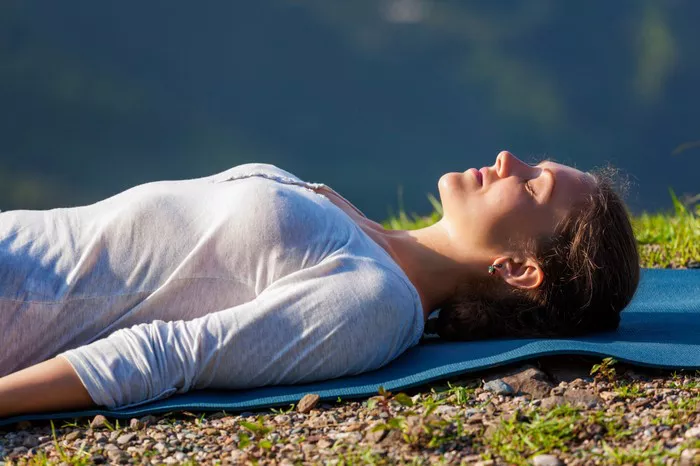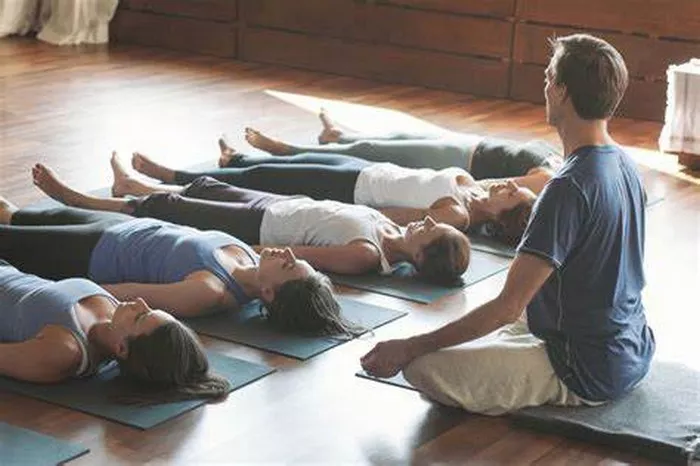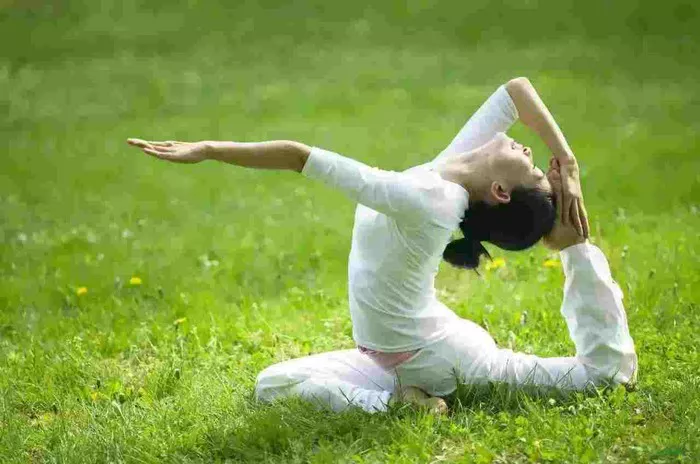Moon Pose, known as Chandrasana in Sanskrit, is a beautiful and balancing posture in the practice of yoga that can have numerous benefits for both the body and mind. Its name, derived from the Sanskrit word “Chandra” meaning “moon,” reflects its graceful and calming nature, evoking the serenity and balance associated with the moon itself. This posture helps bring harmony between the body’s movements and the mind’s focus, making it an excellent addition to a yoga routine for practitioners of all levels.
In this article, we will explore the numerous physical, mental, and emotional benefits of Moon Pose in yoga, how to properly execute it, and how it can positively impact your overall well-being.
What is Moon Pose?
Moon Pose, or Chandrasana, is a standing pose that involves balancing on one leg while the other leg extends outward to the side. The arms are often held above the head, creating a crescent shape with the body that mirrors the shape of the moon. This posture requires both flexibility and strength, along with concentration and balance, to hold the pose effectively.
How to Practice Moon Pose (Chandrasana)
To perform Chandrasana, follow these simple steps:
Start with a Neutral Position: Stand tall in Tadasana (Mountain Pose), with your feet hip-width apart and your arms at your sides. Ground yourself firmly by distributing your weight evenly through both feet.
Engage the Core: Gently engage your core muscles to support your spine, and lengthen your body upwards. This is important for maintaining balance during the pose.
Shift Your Weight: Slowly begin to shift your weight onto your right leg. Keep your left leg extended and lift it to the side, moving it horizontally away from your body. Keep your left leg straight and engaged.
Extend Your Arms: Raise your arms above your head, and extend them straight, keeping your arms aligned with your ears. Palms should face each other, but feel free to adjust the arm position based on your level of comfort.
Find Your Balance: Once your body is aligned and your arms and legs are extended, hold the pose by focusing on a steady point in front of you to help maintain balance. Keep your gaze soft and steady.
Hold and Breathe: Stay in the pose for a few breaths, trying to remain stable. If you feel comfortable, continue holding for 30 seconds to a minute. If you lose balance, don’t worry—simply return to Tadasana and try again.
Release the Pose: To exit the pose, gently bring your left leg back down and release your arms. Return to Tadasana and repeat the same steps on the other side.
The Physical Benefits of Moon Pose
Strengthens the Core: Moon Pose engages the core muscles deeply. As you balance on one leg, your abdominal muscles work to keep your body stable and aligned. A strong core is essential for many yoga postures and overall body strength, and this pose is particularly effective at targeting these muscles.
Improves Balance and Coordination: One of the primary benefits of practicing Chandrasana is its ability to improve balance and coordination. Standing on one leg requires concentration and proper alignment, and over time, the practice of this pose enhances your ability to balance both physically and mentally.
Stretches the Side Body: The extended arm and leg in Moon Pose create a side-body stretch, lengthening the torso and opening the rib cage. This can help to improve flexibility in the spine, ribs, and hips. The deep stretch can also release tension in the body, especially in the sides and lower back.
Improves Flexibility in the Hips: As you lift one leg to the side and extend it outward, you work to stretch the hip abductors and groin area. This can help increase flexibility in the hips and legs, which is beneficial for yoga practitioners who struggle with tight hips.
Strengthens Leg Muscles: While balancing, the standing leg must remain strong to support the body. This helps to tone and strengthen the quadriceps, calves, and ankles. By engaging the standing leg, the muscles in the lower body become more firm and toned.
Enhances Spine Mobility: Chandrasana encourages a gentle backbend in the upper body while stabilizing the lower body. This helps to increase spinal flexibility, relieve tension, and promote better posture. The pose is an excellent counter-pose to the forward bends or seated positions common in many yoga routines.
Boosts Digestion: The stretching of the torso in this posture massages the internal organs, helping to stimulate digestion and enhance the functioning of the digestive system. The pose can also promote blood flow to the intestines, which aids in detoxification and better absorption of nutrients.
The Mental and Emotional Benefits of Moon Pose
Calming and Stress-Relieving: Like many yoga poses, Moon Pose has a calming effect on the mind and body. The posture encourages deep, steady breathing, which activates the parasympathetic nervous system and promotes relaxation. Holding the pose for several breaths can reduce feelings of stress and anxiety, making it an ideal practice for those seeking emotional balance.
Improves Focus and Concentration: Chandrasana requires intense focus and attention to balance. When practicing the pose, you must direct your attention to the sensations in your body and your breath. This helps to train the mind to be more focused and present, improving your concentration not only in yoga but also in daily life.
Promotes Mind-Body Connection: In order to perform Moon Pose correctly, there needs to be a deep connection between the body and the mind. Practicing Chandrasana helps to develop a mindful approach to movement and posture, leading to a more harmonious relationship with your own body.
Encourages Emotional Balance: The fluidity of Moon Pose, combined with its grounding nature, encourages emotional stability. When holding the pose, there is a sense of openness and grace, fostering an emotional balance that helps soothe anxiety or frustration.
Promotes Self-Confidence: Successfully holding the Moon Pose requires practice, balance, and a bit of courage. As you improve and gain more confidence in your ability to hold the posture, this can translate into increased self-confidence both on and off the mat.
Cultivates Inner Peace: The moon is often associated with serenity, calmness, and peace. By practicing a pose inspired by the moon, practitioners can tap into this sense of quiet and inner peace. Over time, this sense of tranquility can extend to daily life, making it easier to stay calm in stressful situations.
The Spiritual Benefits of Moon Pose
Connects with the Energy of the Moon: In yogic tradition, the moon is often seen as a symbol of feminine energy, intuition, and calmness. Practicing Chandrasana can help connect you with the lunar energy, cultivating qualities such as intuition, receptivity, and patience. It serves as a reminder to honor your feminine qualities and cycles of rest and renewal.
Balances the Solar and Lunar Energies: In yoga philosophy, the solar energy is associated with active, outward-focused actions, while lunar energy is linked to inward focus, rest, and receptivity. By balancing the body in a position that reflects both qualities, Moon Pose helps harmonize these energies. This balance between the active and passive can contribute to a more balanced life.
Enhances the Flow of Prana: Prana, or life force energy, is said to flow freely when we practice yoga with mindfulness and intention. The expansive nature of Chandrasana allows prana to flow more freely throughout the body. The stretching and opening of the body channels energy in a way that revitalizes and restores the practitioner’s sense of vitality and well-being.
Common Mistakes to Avoid in Moon Pose
While practicing Moon Pose, it’s important to be mindful of a few common mistakes that may reduce the effectiveness of the posture or lead to injury:
Overarching the Back: While a slight backbend is part of the pose, be careful not to overarch the lower back, as this can strain the spine. Instead, engage your core to keep the spine lengthened and stable.
Not Engaging the Standing Leg: One of the most important aspects of Moon Pose is maintaining a strong, engaged standing leg. Failing to engage the leg can result in losing balance and stability. Focus on pressing down through the foot and using the muscles of the leg to support your body.
Letting the Arms Drop: The arms should remain extended above the head, creating a line of energy through the body. Dropping the arms can disrupt the alignment of the body and reduce the benefits of the pose.
Lack of Balance: If you find it difficult to balance, start by practicing near a wall or holding onto a chair for support. Over time, you will develop the strength and stability necessary to hold the pose independently.
Conclusion
Moon Pose (Chandrasana) offers a unique blend of physical, mental, emotional, and spiritual benefits that can enhance your overall well-being. Whether you’re seeking to improve balance, strengthen your core, increase flexibility, or cultivate inner peace, this posture provides a pathway to all of these benefits. As with any yoga pose, consistent practice and patience are key to experiencing the full benefits of Moon Pose.
By incorporating Chandrasana into your yoga practice, you can create a harmonious connection between your body, mind, and spirit, helping to achieve balance and tranquility both on and off the mat. So, the next time you practice Moon Pose, take a moment to breathe deeply, stretch your body, and embrace the calm, lunar energy that it brings.
Related Topics:





















